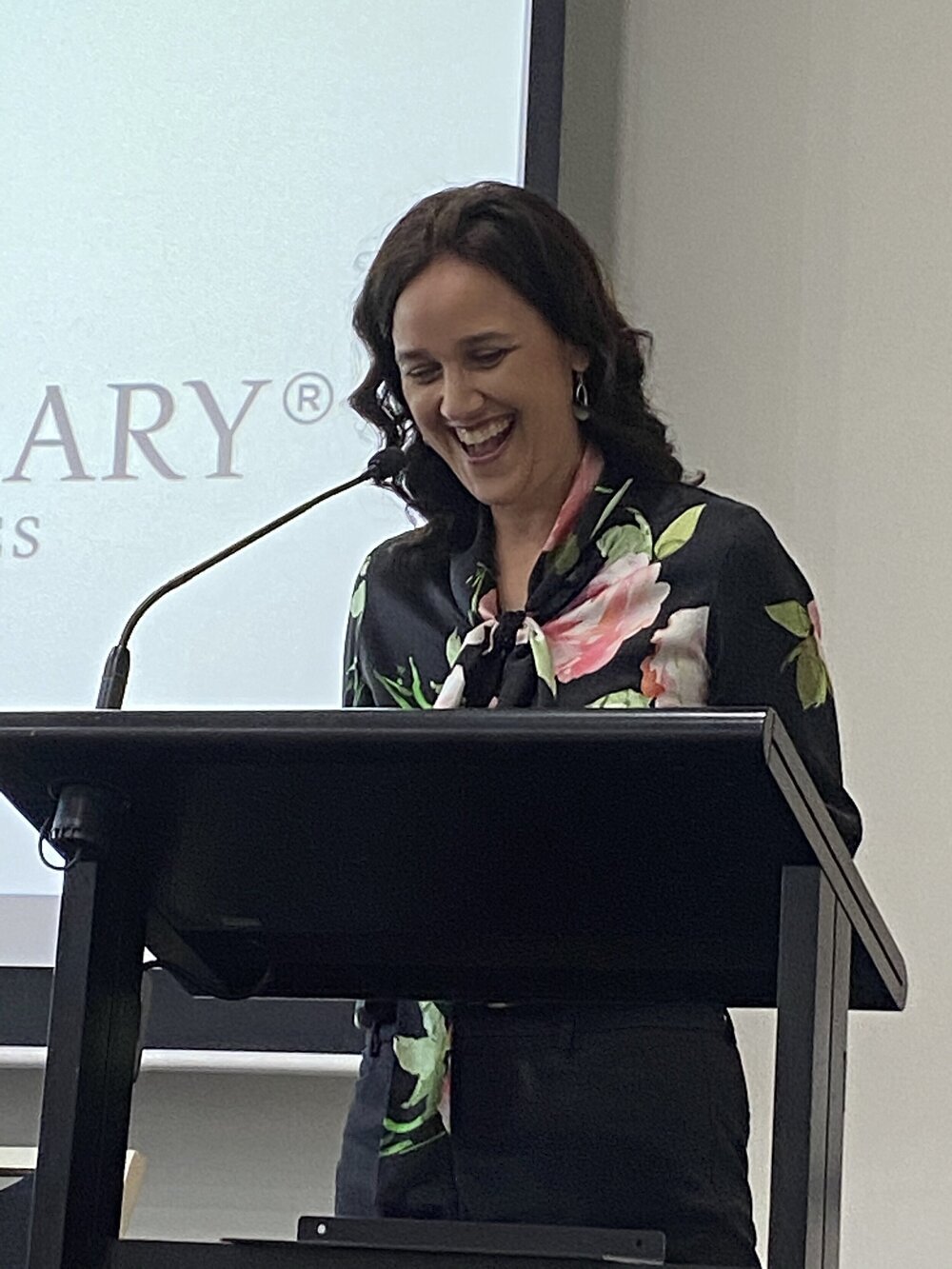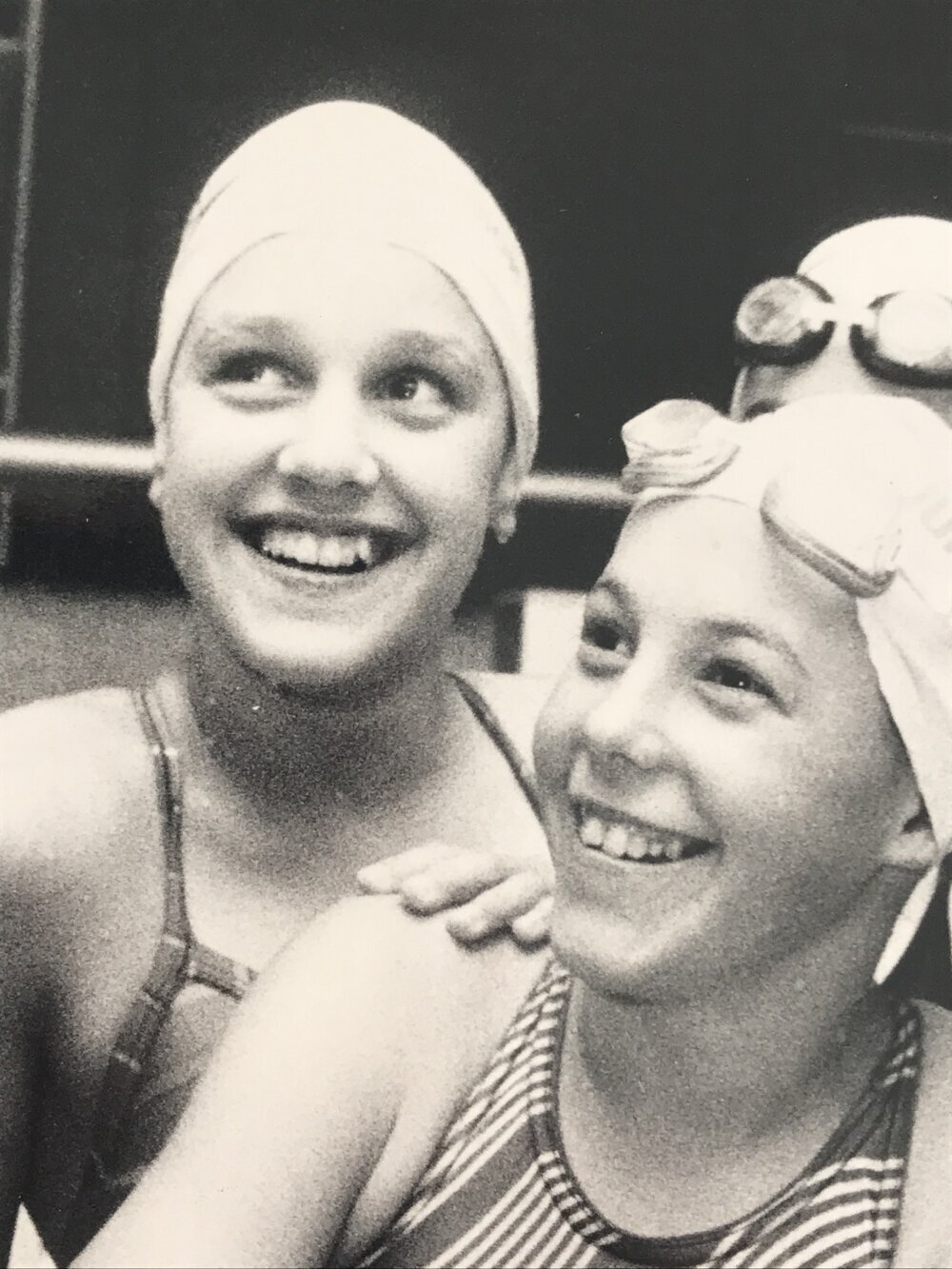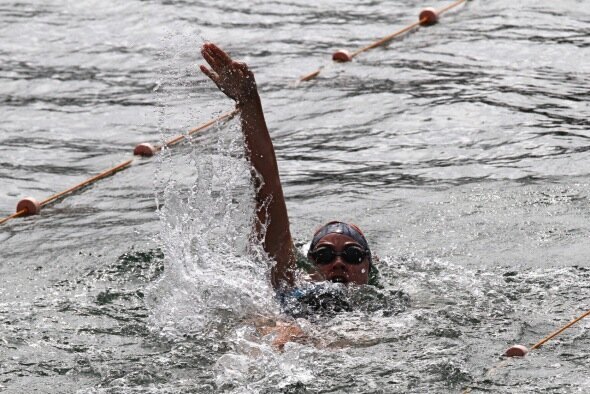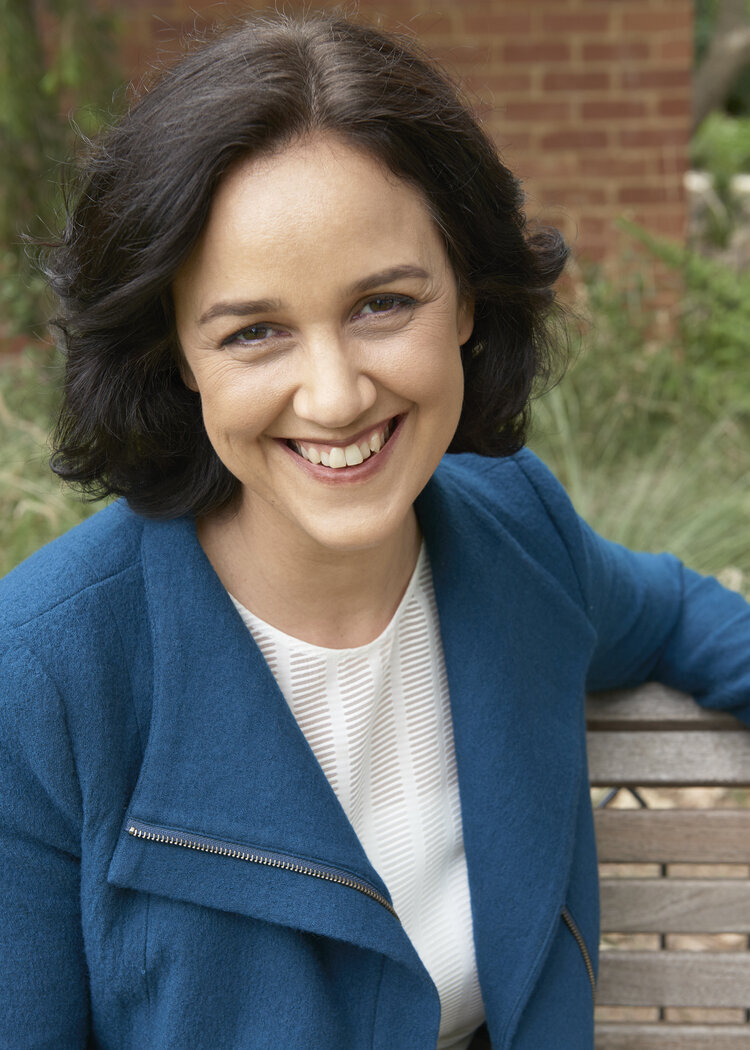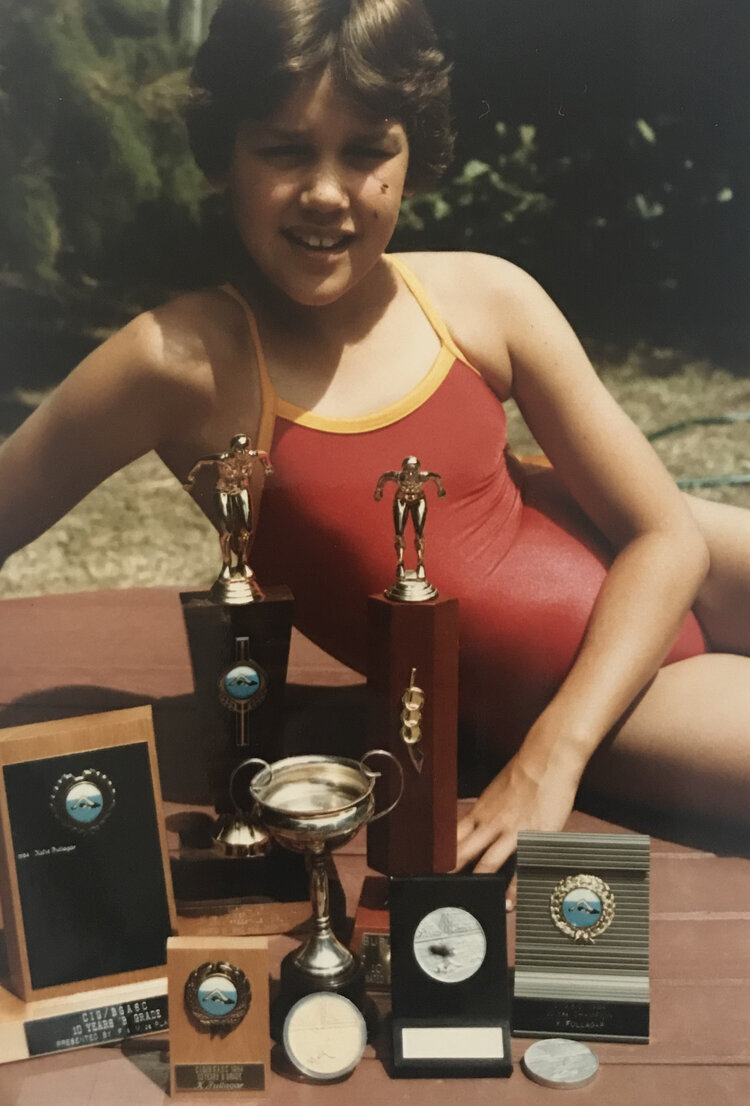Kate Fullagar - Sydney, Australia
I had to float; I was convinced the rocks beneath my feet were turtles!
Kate has vivid early memories of learning to swim. It was a journey which took her to the challenges of competitive swimming, of team spirit and championship highs. But it was followed by a deliberate decision to walk away from the sport – for some twenty years.
Kate’s swimming story involves a reconnection with the water, and a discovery of what swimming means to her now.
“What is my story about? I guess that I was once a highly trained competitive swimmer. And then lost all connection to competitive swimming for 20 years. But then found it again in a very unlikely way – in an ocean swim club that ran races like it had literally 100 years ago. It made me realise, and appreciate, that swimming comes in many different forms.”
The early years
“I think I first swam when attempting to cross Candlagan Creek at Broulee, NSW. There was lots of cheering that day, anyway. I also swam at Lotus Bay, Lake Burley Griffin, Canberra, convinced the rocks beneath my feet were turtles, which motivated me to learn how to float. By the time I had my first lesson at Canberra’s Deakin Health Spa I could swim the length of the small pool and was immediately upgraded to a more advanced class with teacher Kevin. This was one of the best moments of my early childhood.”
Friendships grew as did swimming lessons, from once to twice a week. Best swimming friend, Toni Greaves (photo below- Kate on left, Toni right) , became one of her closest in-pool rivals as lessons grew into squad training and swimming took a central role in Kate’s life, in her inner world as much as in her physical day-to-day world.
“I wanted to make a national team, and give up as much school as possible, so I could be a swimmer. But I was always a pretty anxious competitor, not naturally good at competition. It took up a lot of nervous energy, and most of my teenage brain space too.”
Kate spent six years following the black line. Six years between 1984 and 1989 – a period when Australian swimming believed in heavy training schedules to achieve high performance results.
“I once swam 3kms butterfly straight – because my coach asked me to.”
“My swimming club believed in producing distance swimmers and all-rounders. My favourite event was 200m butterfly, but most of us could swim decent medleys. I happened to be the same age as some of the greatest butterfliers in Australian swimming history – Susie O’Neil and Hayley Lewis – so I focused on the 200m backstroke. But in my heart, I was a butterflier. It isn’t as difficult as people think. It may be harder to master, but once you do it feels like you are really flying. It’s so elegant. It’s the most noble event.”
“Swimming dominated my coming of age life, providing legions of memories.”
Kate has fond memories of swimming being a social sport, with many team activities involving interstate travel and overseas trips to Hong Kong and Germany.
“I always felt closer to my squad friends than school friends, because only they knew what it was like to live an almost double life – half in the pool and half in a place that never thought of the pool. My first boyfriend was on the swim team. My friendship with Toni became stronger than ever, even though we were extremely fierce rivals in competition.
“I gained a lot as a teenager – being fit and understanding how sport worked. It also came in handy at school – I was useful in PE classes!”
“I realised I wasn’t improving. Improvement is the ultimate drug to keep you going. Without it, it’s hard to carry on.”
By the age of 16 Kate’s progress had slowed. She had fallen out of love with the sport and decided to quit.
“I didn’t swim much for years. I started again in my late 30s when I worked in Sydney and a work colleague invited me to join his ocean swimming club at Balmoral Beach. I didn’t know such a thing existed – a family club competing with handicaps in unpredictable sea swell every Saturday – come rain or shine. I was persuaded and it’s become addictive. No rigorous training timetable, no training at all really. And finally I have learned to like competition because it now means nothing to me – other than the joy of winning or losing; the challenge of the race itself rather than the result. A nice long ocean swim feels like going for a nice long bush walk.”
More than two decades on and it’s the old fashioned orange lane ropes strung between two jetties which entice Kate to the water, all part of a perfect Balmoral swimming community.
“I love seeing really young kids enjoy swimming without thinking they have to be competitive athletes, like I always did. I also really love seeing elderly members enjoy it, despite arthritis or some other injury they might have to suffer in their normal life. The club is also an encouraging place for disabled swimmers. Because every single member has a time handicap, having a physical handicap doesn’t really make so much difference.”
Kate still swims on a Saturday with ‘The Spit Club’, Balmoral Beach, between October and April. She ventures further to swim the occasional organised event in other Sydney waters. “It’s so incredibly Sydney. Usually warm. Usually gorgeous water.”
Self- instruction supports Kate’s training program these days.
“In the ‘80s I was coached by one of the best in the country. If I concentrate hard I can remember most of what he taught me, and usually know what I should be doing or adjusting. But I just want to keep strong enough to feel confident in the water. If I really wanted to improve I’d get out of the ocean and into a good pool and rack up the kilometres. And I’m not doing that!”
Swimming has given Kate her mental toughness
Competitive swimmers know the rigour and demands of the training timetable. For Kate this was both a blessing and a curse. She disliked having a strictly timetabled life but acknowledges it has given her the ability to cope with big mental or physical challenges. She’s found inner strength when facing a job interview or a public speaking challenge; “If I could cope with a final at a national swim competition then I can probably cope with this. And I do.”
Adventures in a giant lake, in Maine
“A few years ago I found myself doing a much tougher swim that I had expected in a huge lake in Maine, USA, with young people who were way better swimmers than I had realised. They finished the several-kilometre swim long before me – I had actually lost sight of them and dusk was descending and I was all alone in a giant lake. I think I might have panicked but I knew that if I just put my head down and keep turning my arms over I’d reach land eventually. If I could once swim 3000m of butterfly I could get myself out of a giant lake.”
Fortunately Kate did make it – and her story is more complete for her achievement.
Kate’s swimming highlights
Whole swimming seasons! Great meets, great improvements
Unexpectedly winning my first state medal, a bronze, as an 11 year old for 100m butterfly and seeing the joy on my mum’s face
Being selected for the NSW team at an all-European meet in Germany 1988
Being part of a co-ed team who saw each other at 5.30am every day from different backgrounds, ages and swimming abilities
Favourite swimming places and recommendations
“Balmoral Beach. Also the beach at Watson’s Bay is amazing. Bondi. Bronte. I mean, it’s a slam dunk in Sydney – you cannot go wrong.”
“I like body surfing but am not very skilled at it. The best kind of surf for my exact skill level is at the South Coast of NSW. I go there every year and love body surfing at McKenzie’s Beach or Broulee Beach. Few Sydneysiders agree with me because the water is too cold for them. And few proper bodysurfers agree with me because they think it’s too tame. So it’s just my preference I guess!”
What’s next?
Kate is thinking about swimming the 2.4km ocean race from Sydney’s Coogee beach around Wedding Cake Island in November 2020 or April 2021 and has challenged Swim People’s Scott Wilson to join her.
We can’t wait to report the event on Swim People!
And finally
Kate’s British mother, a non-swimmer, knew the importance of learning to swim, and introduced her to formal swimming lessons at the Deakin Health Spa in Canberra. Kate’s life has in part been defined by swimming and the camaraderie it gave her.
“Swimming offered so much richer a community than anything a school could ever give. I am amazed how at how deeply we knew each other – we often knew all our best times for all our best races; we knew all our injuries or bodily changes; we knew what everyone was like at dawn and what they were like long after nightfall.
“I am not in touch with any of them anymore, which sometimes makes me sad, but then I also think this way they remain perfect teenagers in my mind!”
About Dr Kate Fullagar
Kate is a Historian at Macquarie University. Once a competitive swimmer, she has found a new love of swimming in the ocean with her now husband.
“Sharing this love is a big part of our life together. We had a son in 2006 and started at the Spit Swimming Club at Balmoral Beach really to encourage him to love swimming like we do. It didn’t work – he likes soccer more. I don’t understand soccer in the slightest, but I remember my mum learned about the swimming world for me, so I am trying to learn about soccer now.”
Kate has never forgotten a consciousness swimming gives her:
“When I am in the water, my body always seems to remember its early lessons in floating, treading, getting out of rips etc. One of the saddest things I see is people fearful of water. I am grateful that I never have that feeling.”
Follow Kate on Twitter. @kfullagar


